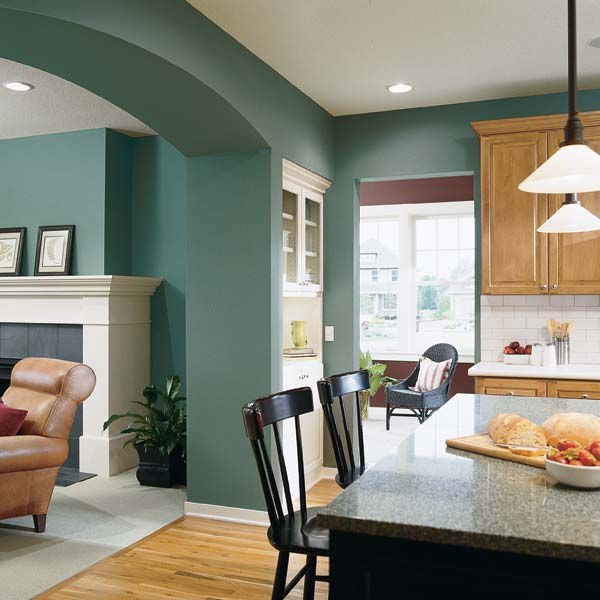In today’s dynamic work environment, companies often require employees to undertake work assignments away from their usual base of operations. Providing employees with comfortable, home-like accommodations during these assignments is not just a matter of corporate responsibility, but it’s also a strategic approach to enhancing employee satisfaction and productivity. Comfortable living conditions can significantly reduce the stress associated with work travel and help employees maintain a healthy work-life balance. This article explores effective strategies for providing employees with accommodations that feel like a home away from home, ensuring their time spent on work assignments is both productive and enjoyable.
1. Understanding Employee Needs: The first step in providing suitable accommodations is understanding what employees value most in their living arrangements. This understanding can be achieved through direct communication, such as surveys or interviews, where employees express their preferences and concerns. Factors such as the need for privacy, desire for certain amenities, or proximity to local attractions and services can vary greatly among individuals. By acknowledging these needs, employers can tailor accommodations to suit the diverse preferences of their workforce, leading to increased satisfaction and comfort.
2. Exploring Workforce Lodging Solutions: To effectively meet the accommodation needs of employees, exploring specialized workforce lodging solutions is beneficial. Companies like Iron Guard Housing specialize in providing tailored lodging services that cater to the specific requirements of working professionals. For businesses, partnering with such providers ensures that employees have access to quality accommodations that align with their needs and preferences.
3. Prioritizing Location: The location of the accommodation is a critical factor to consider. It’s important to choose lodging that is conveniently located near the workplace to minimize commute times and enhance overall convenience. Additionally, considerations such as the safety of the neighborhood, proximity to essential services like grocery stores and pharmacies, and access to public transportation can greatly impact the employee’s living experience. A well-located accommodation not only saves time but also contributes to the employee’s peace of mind and well-being.
4. Ensuring Comfort and Privacy: Comfort and privacy are paramount in making accommodations feel more like home. This includes providing high-quality bedding, ensuring the availability of private bathrooms, and offering ample personal space. Comfortable furnishings, effective heating and cooling systems, and a quiet environment contribute to a restful living space where employees can relax and recharge after work. Attention to these details demonstrates a company’s commitment to the well-being of its employees, fostering a sense of appreciation and loyalty.
5. Offering Connectivity and Technology: In today’s connected world, ensuring that accommodations offer reliable high-speed internet and modern technological amenities is essential. Employees need connectivity not just for work-related tasks but also for personal activities like streaming entertainment, staying in touch with family, or pursuing online hobbies. Providing a strong Wi-Fi connection, along with amenities such as smart TVs or docking stations, can significantly enhance the comfort and functionality of the accommodation, making it easier for employees to stay connected and productive.
6. Creating a Homely Atmosphere: To further enhance the home-like feel of accommodations, it’s important to create a welcoming and comfortable atmosphere. This can be achieved by including amenities that one would typically find in a home, such as a fully equipped kitchen, a cozy living area, and homely decor. Providing these features allows employees to cook their own meals, relax in a comfortable space, and feel a sense of normalcy and routine. Personal touches like artwork, plants, or books can also make a significant difference in making the space feel more personalized and less like a generic hotel room.
7. Facilitating Social Interaction: For employees on long-term assignments, the opportunity for social interaction can be crucial for mental well-being. Accommodations that offer communal spaces, such as lounges, gardens, or shared dining areas, can encourage interaction and camaraderie among colleagues. Organizing social events or outings can also help employees connect with each other, fostering a sense of community and belonging. This not only improves morale but also helps in building strong team dynamics.
8. Providing Health and Wellness Facilities: Access to health and wellness facilities is another important aspect of home-like accommodations. Facilities such as on-site gyms, recreational areas, or even proximity to local parks and fitness centers can contribute significantly to the physical and mental health of employees. Additionally, ensuring easy access to healthcare services, whether it’s a nearby clinic or telehealth options, can provide peace of mind and demonstrate a company’s commitment to its employees’ overall well-being.
9. Flexible and Customizable Options: Recognizing that one size does not fit all is key when it comes to accommodations. Offering a range of lodging options that cater to various preferences and budgets is important. Some employees may prefer the privacy of a studio apartment, while others might value cost-effective shared housing. Providing options allows employees to choose accommodations that best suit their individual needs, ensuring a more comfortable and satisfying stay.
10. Continuous Feedback and Improvement: Finally, gathering continuous feedback from employees about their accommodation experience is crucial for ongoing improvement. Regular check-ins, surveys, or feedback forms can provide valuable insights into what works well and what could be improved. Acting on this feedback not only enhances the accommodation experience for current employees but also informs better strategies for future assignments.
Conclusion: Providing employees with home-like accommodations during work assignments is a multifaceted endeavor that requires careful consideration of various factors. From creating a comfortable and homely atmosphere to facilitating social interaction, providing health and wellness facilities, offering flexible options, and continuously seeking feedback for improvement, each strategy plays a vital role in enhancing the employee experience. By prioritizing the comfort and well-being of employees, companies can not only improve job satisfaction and productivity but also foster a culture of care and appreciation that resonates throughout the organization.


